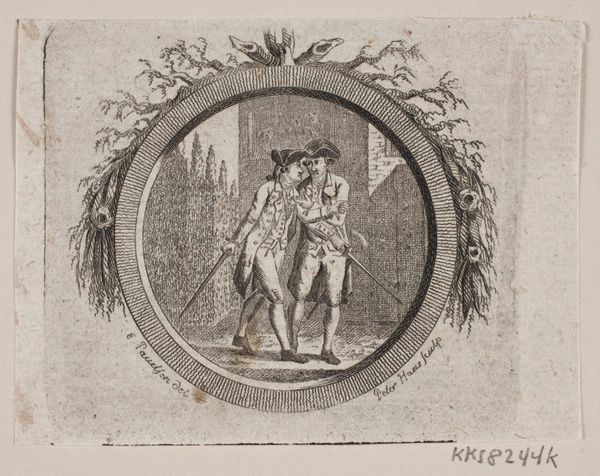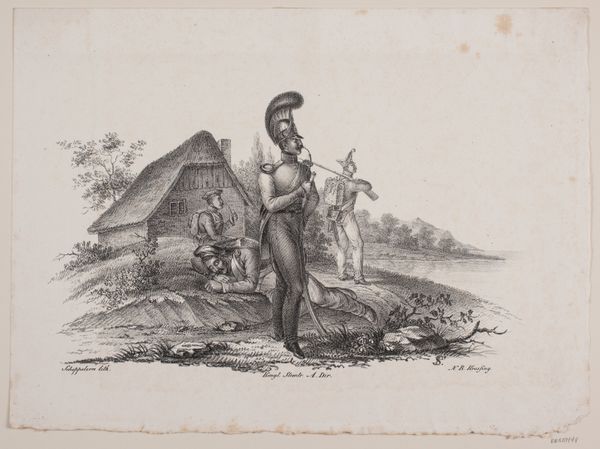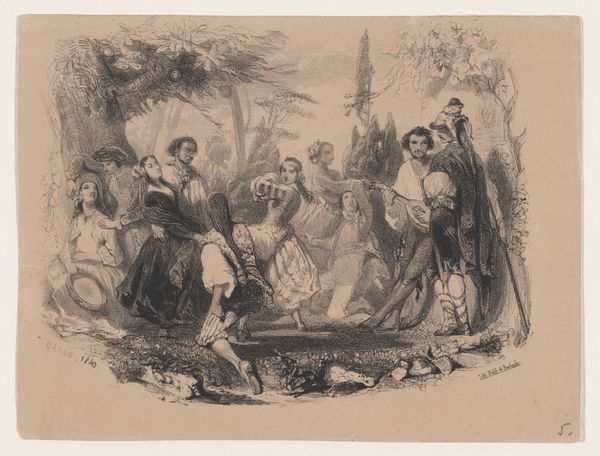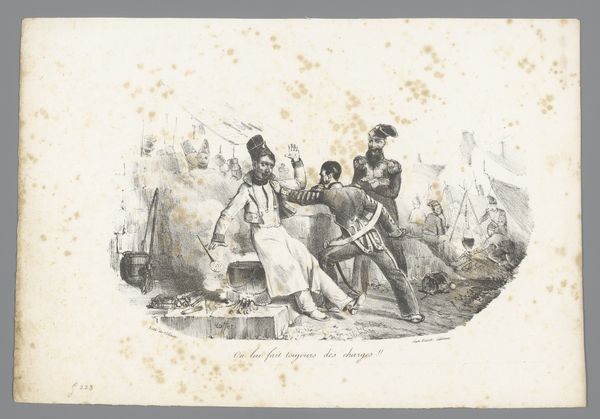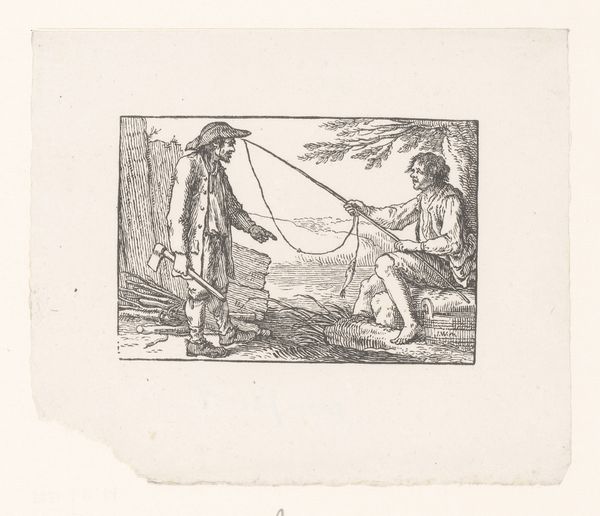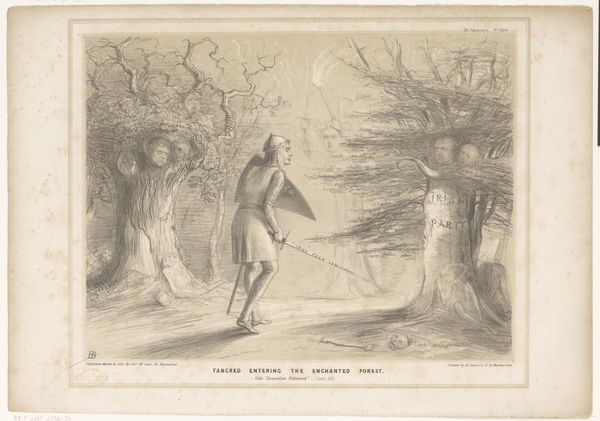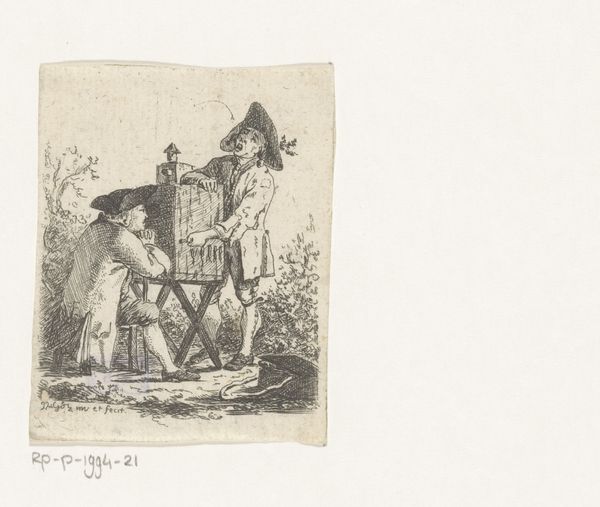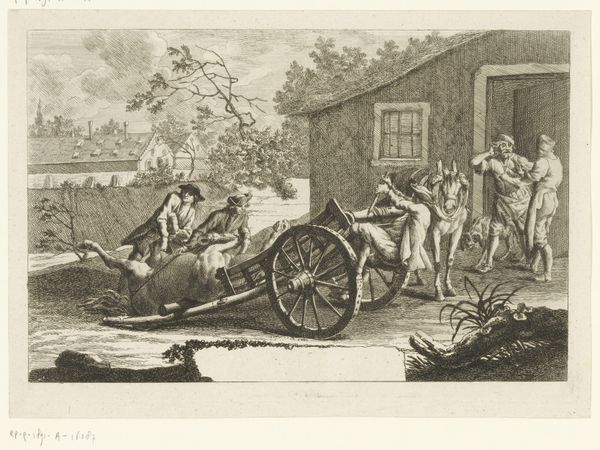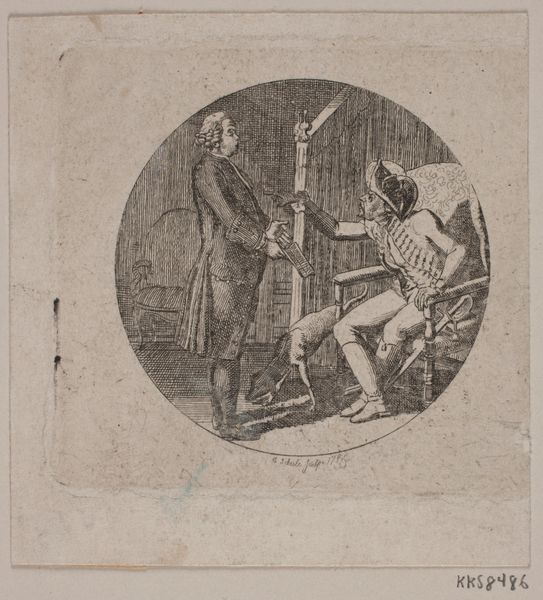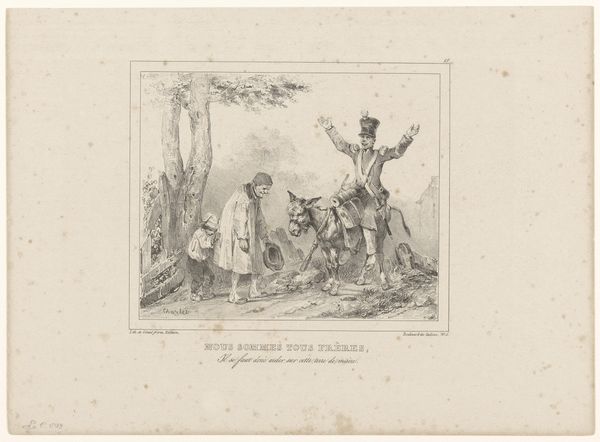
Vignet til Samuel Richardson "Sir Carl Grandisons Historie" 1780 - 1782
print, engraving
history-painting
engraving
Dimensions: 60 mm (height) x 82 mm (width) (bladmaal)
Editor: This is Peter Haas's "Vignet til Samuel Richardson 'Sir Carl Grandisons Historie'," an engraving from around 1780. The scene feels intensely dramatic, with a woman seemingly being pulled away from a carriage as a man lies on the ground. How should we understand the social context of this type of illustration? Curator: Given its function as a book illustration, we need to consider how images like this circulated within a specific reading public. The narrative being depicted references Richardson’s novel, which, through its popularity, shapes the tastes and even moral viewpoints of its readership. Editor: So the engraving isn't just depicting a story, it's part of a bigger conversation? Curator: Precisely. These illustrations in a way visualize ideals and social mores for consumption. What's fascinating is how Haas chose this specific moment. Notice the theatrical framing device he employs; the wreath acts as a stage curtain. The image promotes discussions, through imagery, on what’s considered acceptable, like, say, expressions of emotional states or proper reactions to potential social transgression. Editor: That's interesting, the wreath framing it almost makes it feel performative. It feels very intentional for the viewer. Is it trying to convey any other messaging in particular, given it has a man injured at the foot? Curator: One reading might see it in terms of the rise of sensibility – valuing emotional experiences above perhaps pragmatic action, given one man has apparently been subdued whilst another still makes motions – with clear cues to the intended 18th century viewership of the vignette through specific garments such as tricorns or wigs to signify status. What I'm drawn to is the political side of cultural production at the time: the image both reflecting social ideals *and* subtly shaping them through public interpretation. Editor: That is incredibly helpful, I hadn't considered that illustration could participate in cultural and political conversations, both reflecting and influencing perceptions on different moral viewpoints. Curator: Exactly, thinking about it as part of visual culture and its relationship to literature, politics, and social practices is the key.
Comments
No comments
Be the first to comment and join the conversation on the ultimate creative platform.
